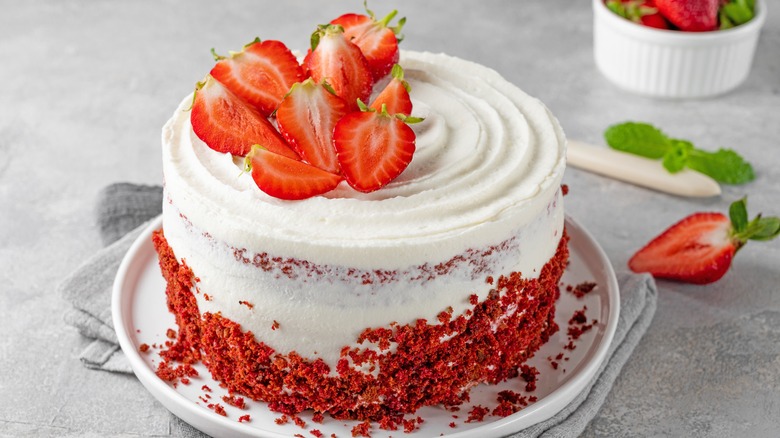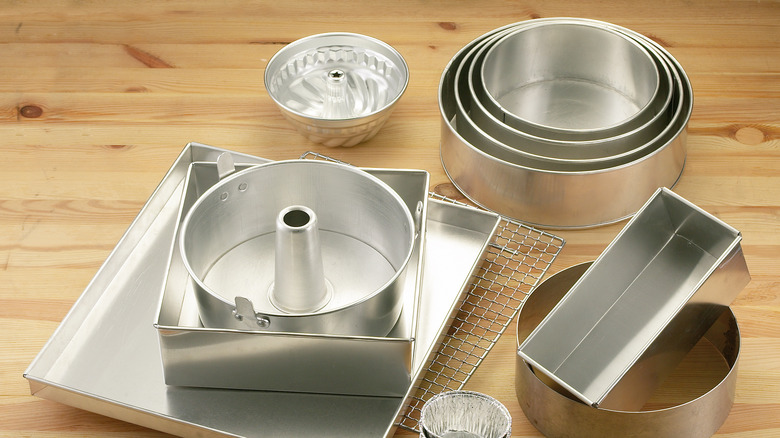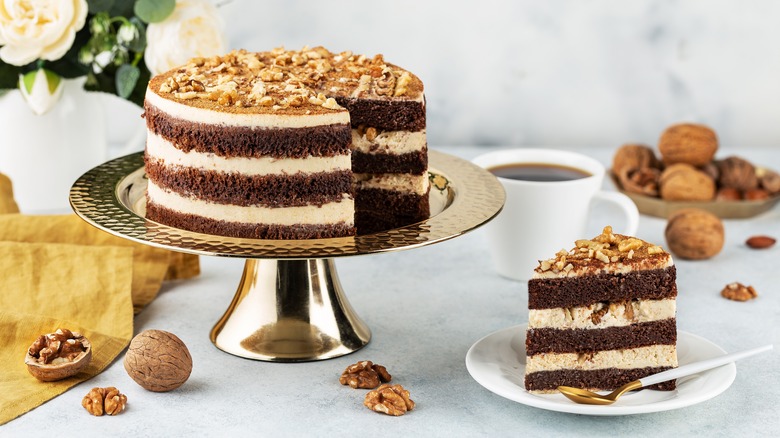What To Consider When Altering A Cake Recipe For Different Pan Sizes
Baking a cake is a fun, easy way to create a homemade dessert accessible to most amateur cooks. Whether from a box or from scratch, many cakes are simple to make, a great way to impress guests, or a perfect treat to bring to a potluck. However, on top of common issues such as cakes sinking or becoming too brown, a big barrier to entry for home cooks is supplies. Cake recipes often call for stand mixers and/or specialty pans, which the average person may not own. In particular, there are numerous different sizes and shapes of cake pans. Unless you're a professional, you likely have one or two. What happens when a recipe calls for a specific pan, and you don't have it in your kitchen?
Luckily, cake recipes can be scaled to fit different pan sizes. All it takes is a little math and a few additional considerations. To alter a cake recipe to fit your pan, simply calculate your pan's difference in volume, then use that as the multiplier for each ingredient.
Compare pan volumes and scale the recipe
To determine how to scale a recipe to fit your cake pan, the first step is to determine the pan's volume. For a rectangular dish, this means multiplying the length, width, and height. For example, let's say you have a 9-inch by 13-inch pan that is 2 inches tall. The volume of this pan would be 9 x 13 x 2, which is 234 cubic inches. Your recipe, on the other hand, calls for a 9-inch by 9-inch square pan, which has a volume of 9 x 9 x 2 for 162 cubic inches. You can't simply use the same amount of batter in the bigger pan; the cake will be too thin and won't cook correctly. You'll need to increase the amount of batter.
To determine how to increase the batter, divide your pan's volume by the volume of the pan the recipe requires. In this case, 234 divided by 162 is 1.44. Each ingredient in your recipe can then be multiplied by 1.44 to achieve the required amount of batter. This calculation works similarly when scaling a recipe down; if you're adapting the same recipe to an 8-inch by 8-inch pan, 8 x 8 x 2 = 128 / 162 = .79. By multiplying each ingredient amount by .79, you'll end up with less batter, and your pan won't be too full.
Tips and considerations when altering cake recipes
The calculation above works the same way for circular pans. You'll just need a different equation to figure out the volume. Start by measuring the radius of the pan (aka half the length across) and the height. Then multiply the radius squared times pi, or 3.14, times the height. Once you have the volume, proceed normally with the rest of the calculations.
More often than not, scaling the recipe using these ratios may make measuring ingredients a challenge. One solution is to weigh the ingredients with a kitchen scale and multiply the weights when determining how much to add. This makes the amounts more precise, improving the final result.
This method also works when making a cake from a box. To decrease the yield, you can similarly measure or weigh the powder to determine how much of it you'll need to use, then do the same for the liquid ingredients. To increase the batter, you'll need to plan ahead and purchase an additional box of cake mix. Though these calculations may seem daunting, multiplication and division are quite easy when implemented. Whether you're making a bigger or smaller cake based on the number of guests or simply don't have the pan size called for in the recipe, this formula can be used to ensure your fluffiest cake still turns out as intended.


